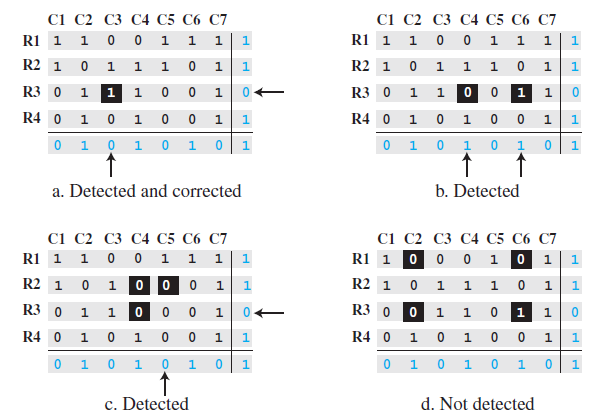Question: A simple parity-check bit, which is normally added at the end of the word (changing a 7-bit ASCII character to a byte), cannot detect even

Show how the following errors can be detected:
a. An error at (R3, C3).
b. Two errors at (R3, C4) and (R3, C6).
c. Three errors at (R2, C4), (R2, C5), and (R3, C4).
d. Four errors at (R1, C2), (R1, C6), (R3, C2), and (R3, C6).
C2 4 5 6 7 R1 1 1 0 0 1 1 1 1 C2 4 5 6 7 R1 1 1 0 0 1 1 1. 1 R2 1 0 R2 1 0 1. 1. 1. R3 0 R3 0 1. 1. R4 0 1 R4 0 1. 1. 0 1 0 1 0 1 0 0 1 0 0 1 1 a. Detected and corrected b. Detected (2 4 3 6 7 R1 1 1 0 0 1 1 1|1 1 00 0 C2 4 5 6 7 R1 1 0 0 0 1 0 1 1. R2 1 0 R2 1 1. 1. 1. 1. R3 0 0 1 R3 0 1 1 0 0 1 0 1. R4 0 1 0 1 0 1 1 0 1 0 1 R4 0 0 1. 1. 1 0 1 0 1 0 1 c. Detected d. Not detected
Step by Step Solution
3.46 Rating (159 Votes )
There are 3 Steps involved in it
The following shows the errors and how they are detected a In the case of one error it can be detect... View full answer

Get step-by-step solutions from verified subject matter experts


